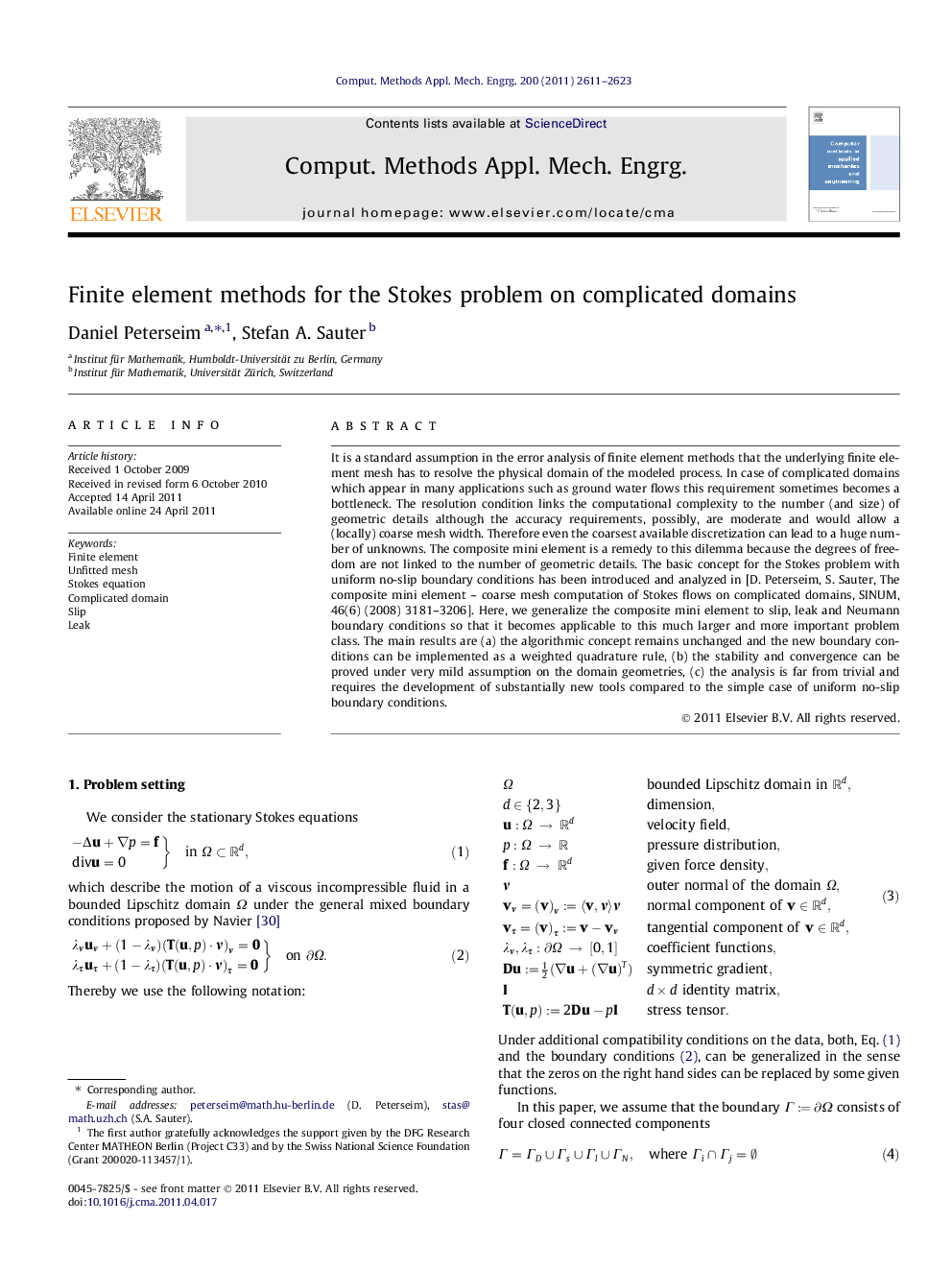| Article ID | Journal | Published Year | Pages | File Type |
|---|---|---|---|---|
| 498535 | Computer Methods in Applied Mechanics and Engineering | 2011 | 13 Pages |
It is a standard assumption in the error analysis of finite element methods that the underlying finite element mesh has to resolve the physical domain of the modeled process. In case of complicated domains which appear in many applications such as ground water flows this requirement sometimes becomes a bottleneck. The resolution condition links the computational complexity to the number (and size) of geometric details although the accuracy requirements, possibly, are moderate and would allow a (locally) coarse mesh width. Therefore even the coarsest available discretization can lead to a huge number of unknowns. The composite mini element is a remedy to this dilemma because the degrees of freedom are not linked to the number of geometric details. The basic concept for the Stokes problem with uniform no-slip boundary conditions has been introduced and analyzed in [D. Peterseim, S. Sauter, The composite mini element – coarse mesh computation of Stokes flows on complicated domains, SINUM, 46(6) (2008) 3181–3206]. Here, we generalize the composite mini element to slip, leak and Neumann boundary conditions so that it becomes applicable to this much larger and more important problem class. The main results are (a) the algorithmic concept remains unchanged and the new boundary conditions can be implemented as a weighted quadrature rule, (b) the stability and convergence can be proved under very mild assumption on the domain geometries, (c) the analysis is far from trivial and requires the development of substantially new tools compared to the simple case of uniform no-slip boundary conditions.
